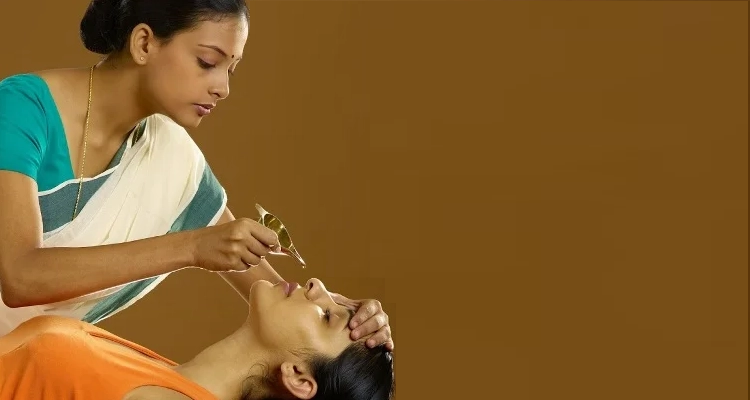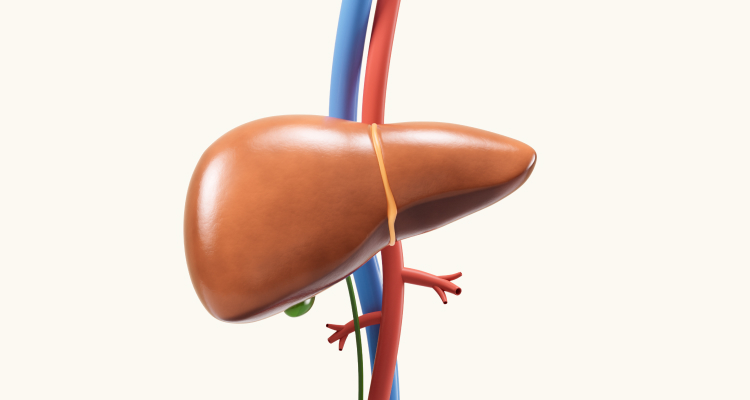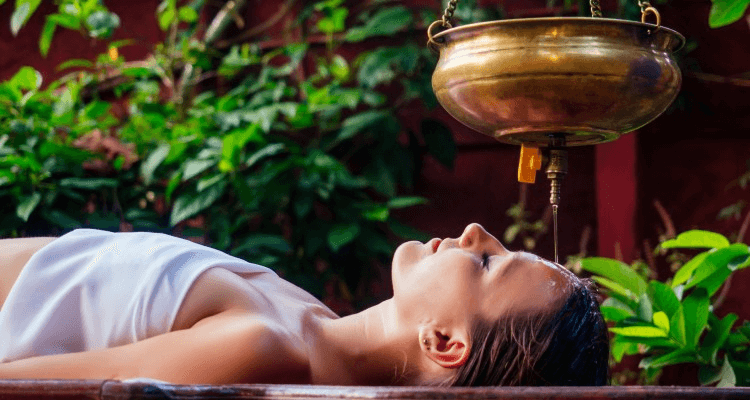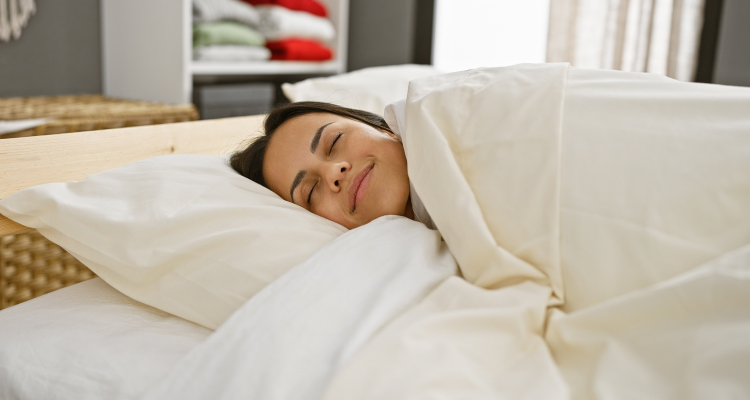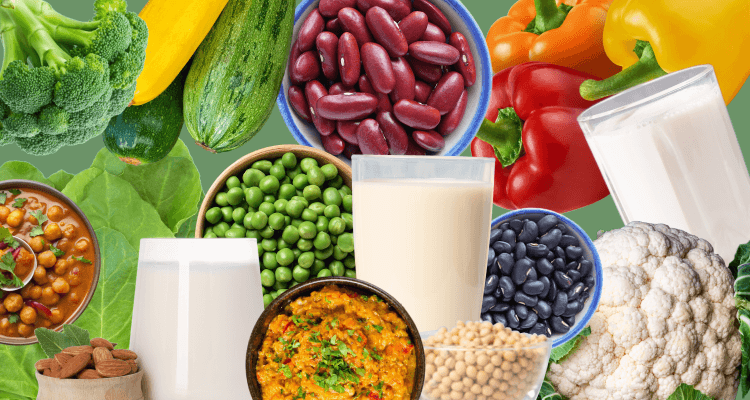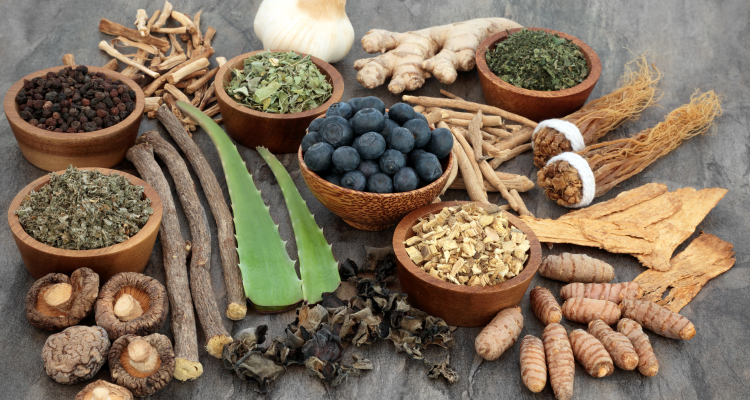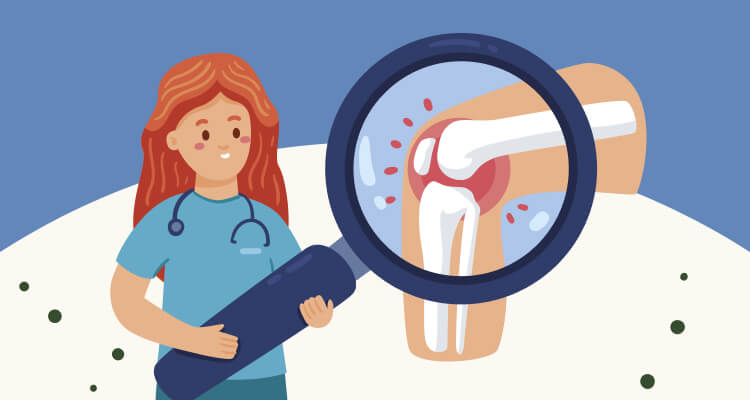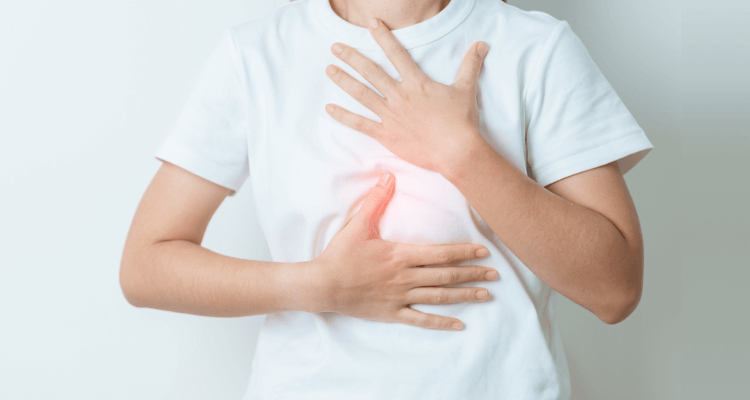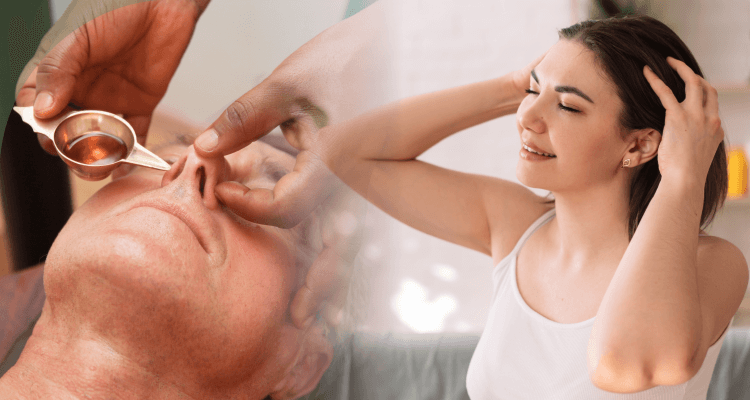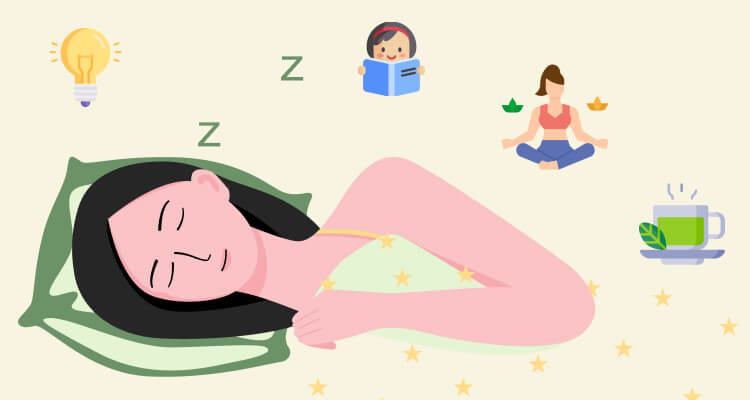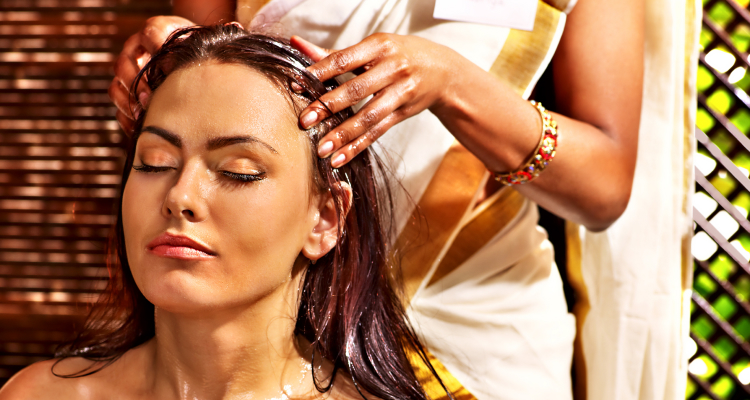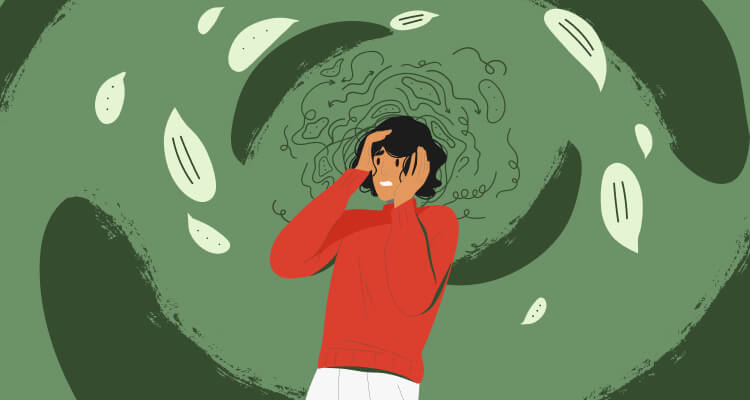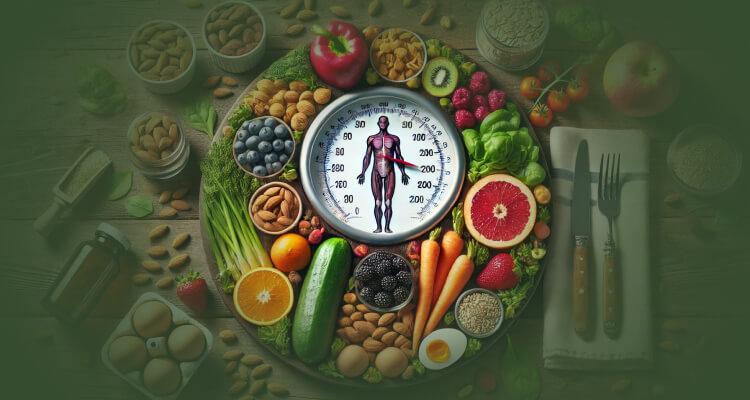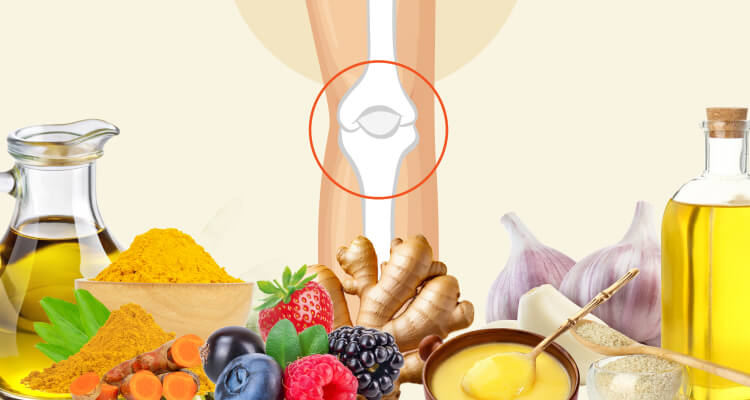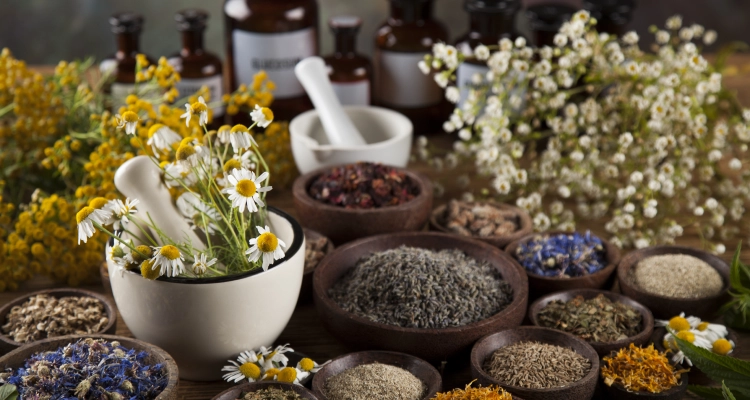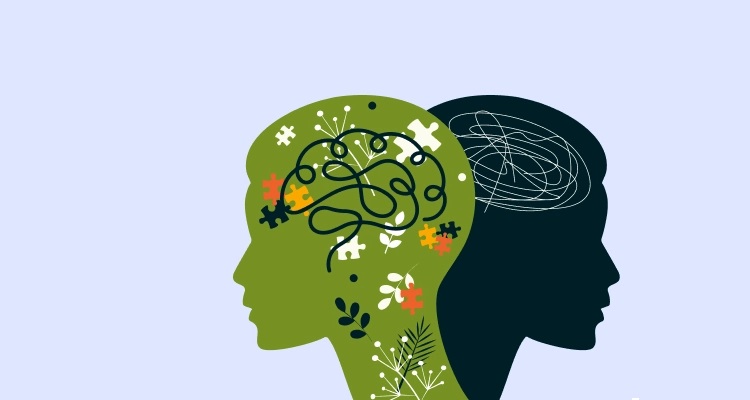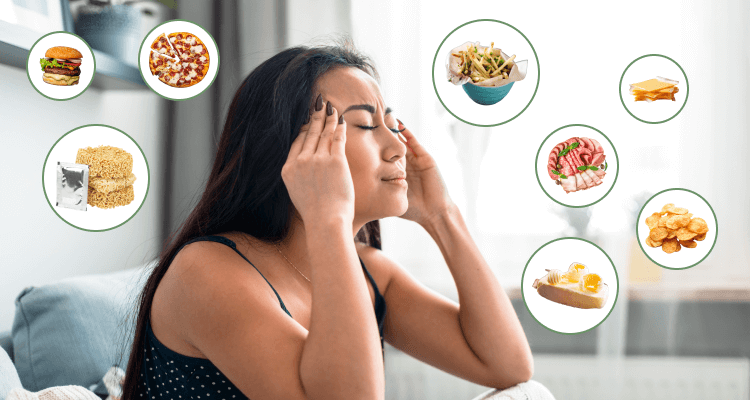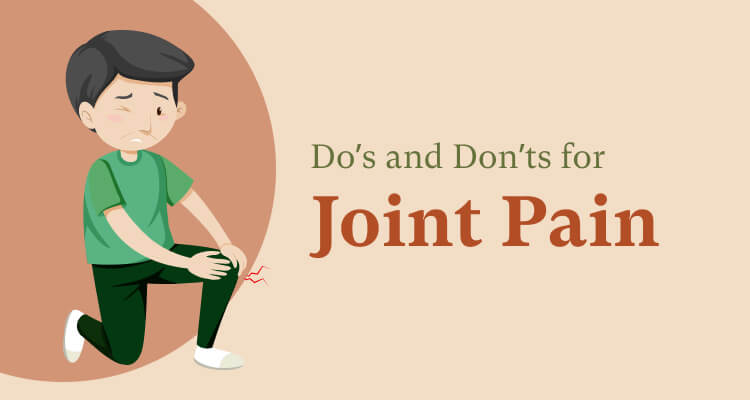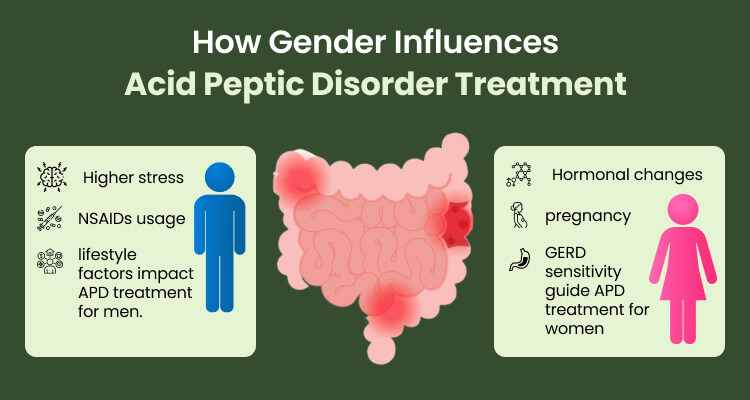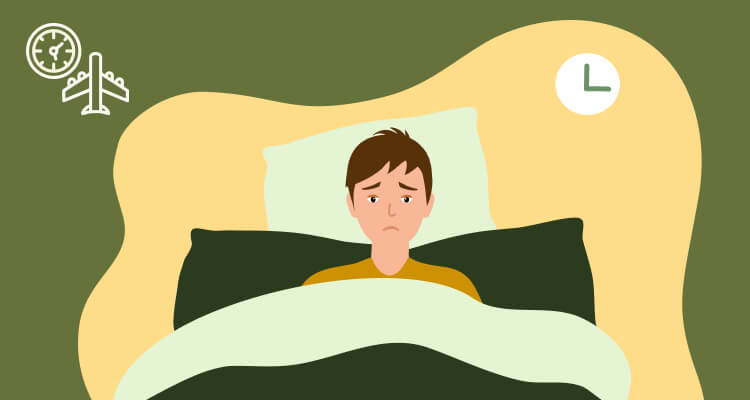Headaches are a universal experience, ranging from mild inconveniences to debilitating conditions that disrupt daily life. Whether it’s the faint ache from staring at a screen all day or a migraine that stops you in your tracks, we’ve all been there.
Did you know that headaches come in more than 150 types? While we won’t go through all of them (don’t worry!), we’ll focus on the most common ones and what makes each unique.
What Is a Headache?
At its most basic level, a headache is a pain in any part of your head—your forehead, temples, scalp, or even your neck. But headaches aren’t caused by the brain as the brain lacks pain receptors. Instead, the pain comes from surrounding structures like:
-
- Blood vessels: When blood flow changes or vessels dilate (expand), it can trigger pain.
- Muscles: Tension or strain in neck and scalp muscles can lead to headaches.
- Nerves: Overactivity of certain nerves, especially the trigeminal nerve, is linked to headaches.
- Sinuses: Infections or blockages in the sinuses can create pressure and pain.
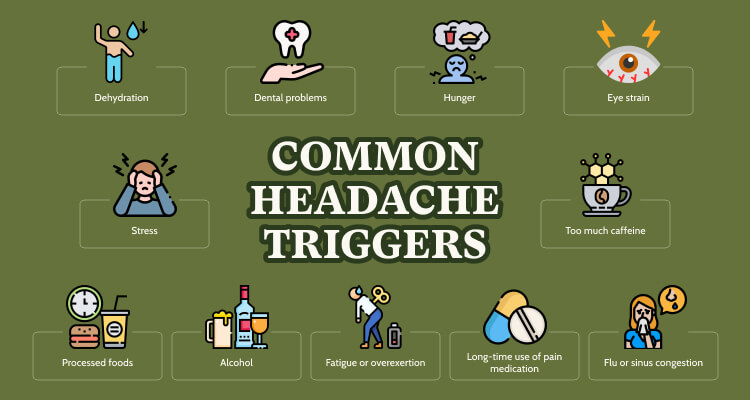
Tension Headaches
Tension headaches are often described as “everyday headaches.” They are the most common type, and they’re often linked to—you guessed it—stress! If you’ve ever felt a dull, aching pain that wraps around your head like a too-tight headband, you’ve likely had a tension headache.
What it feels like
- Pressure or tightness around the forehead, sides, or back of the head.
- Steady pain (not throbbing), affecting both sides of the head.
- Sensitivity in the scalp, shoulder, and neck muscles
What causes it
- Stress: Deadlines, exams, or just a rough day can tighten muscles and lead to tension headaches.
- Poor posture: Slouching at your desk can strain neck muscles.
- Eye strain: Hours of staring at screens without breaks.
Ayurvedic Understanding of Tension Headaches
Tension headaches are primarily linked to Vata dosha imbalance, often exacerbated by mental stress and lifestyle irregularities. Ayurveda offers an integrated approach to tension headaches, addressing both physical and psychological dimensions.
- Stress Management: Ayurvedic therapies like Shirodhara (streaming warm oil on the forehead) and Abhyanga (full-body oil massage) are highly effective in calming the nervous system.
- Herbal Treatment: Incorporating herbs like Ashwagandha (known for reducing stress) and Jatamansi (a natural calming agent) supports mental relaxation and balance.
- Yoga: Poses like Child’s Pose (Balasana) and Corpse Pose (Shavasana) help release physical tension and relax the body.
- Breathing Exercise: Regular practice of Alternate Nostril Breathing (Anulom Vilom) helps balance the mind and ease anxiety-related headaches.
- Dietary Adjustments: A diet rich in warm, easily digestible foods like soups, khichdi, and steamed vegetables stabilizes Vata dosha, which is often imbalanced in tension headaches. Avoid stimulants like caffeine and cold, heavy foods that can aggravate stress and Vata.
- Lifestyle Changes: Establishing a consistent daily routine for eating, sleeping, and physical activity reduces lifestyle irregularities that trigger tension headaches. Simple practices like self-massage with warm oils such as sesame oil can provide immediate relief from tension and improve circulation.
Migraines
Migraines are complex and go beyond head pain. They’re actually a neurological condition affecting 39 million people in the United States or about 12% of the population. For some, they can last 4 to 72 hours and come with disabling symptoms.
What it feels like
-
- Severe pain typically on one side of the head
- Nausea or vomiting.
- Sensitivity to light, sound, or smells.
- Sometimes, visual disturbances (like flashing lights or zigzag patterns) are called an aura.
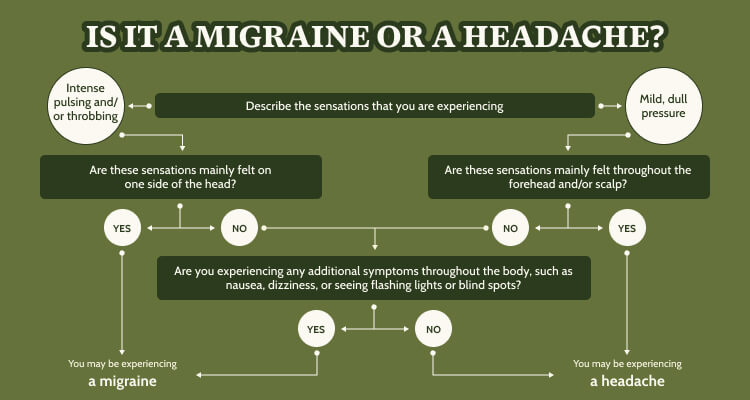
Phases of a Migraine
Migraines often unfold in four stages:
- Prodrome: Hours or even days before the headache, you might feel irritable, fatigued, or crave certain foods.
- Aura: Around 25% of individuals with migraine go to this stage. It involves visual changes like zigzag patterns, flashing lights, or blind spots. Some also feel tingling or numbness.
- Headache Attack: Severe, pulsating pain typically on one side of the head, often accompanied by nausea, vomiting, and heightened sensitivity to light and sound.
- Postdrome: After the pain subsides, you might feel drained or mentally foggy.
Common triggers
-
- Hormonal changes in women if they are pregnant, during menstruation, or menopause
- Specific foods such as aged cheese, chocolate, and red wine
- Sensitivity toward bright lights or strong smells
- Weather changes, dehydration, or skipping meals.
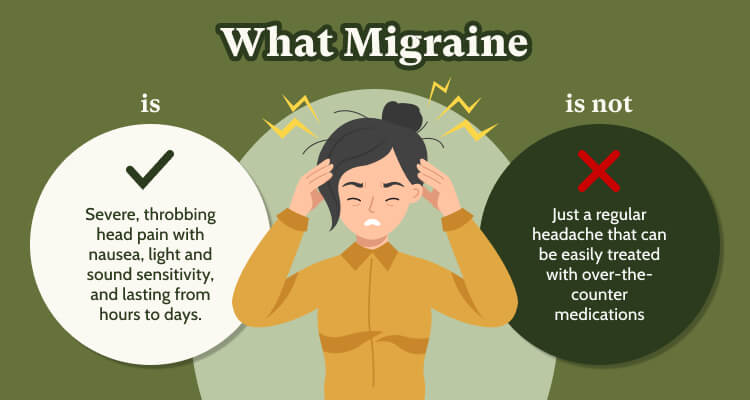
Ayurvedic Understanding of Migraine (Ardhavabhedaka)
In Ayurveda, migraines align closely with the condition known as Ardhavabhedaka. The term translates to “splitting pain in half the head,” aptly describing the characteristic severe, unilateral headaches experienced in migraines. Ayurveda approaches migraine holistically, emphasizing the root causes and preventive care. Treatments focus on dosha balance, ama elimination, and enhancing the nervous system’s resilience.
- Herbs for Relief: Herbs like Brahmi and Shankhpushpi work wonders for mental clarity and calming the nervous system. Ashwagandha helps manage stress triggers that often lead to migraines.
- Panchakarma Therapies: Medicated nasal drops (Nasya) clears toxins from the head region, providing relief and preventing recurrence. A gentle stream of warm oil over the forehead (Shirodhara) deeply relaxes the mind and body, reducing stress-related migraine attacks.
- Lifestyle Adjustments: Stick to regular routines to keep Vata dosha in check. Avoid known triggers like fasting, irregular sleep patterns, and exposure to extreme heat or cold.
- Dietary Wisdom: Include cooling and nourishing foods that calm Pitta, such as milk, ghee, and fruits like pomegranate. Avoid spicy, oily, and processed foods that aggravate symptoms.
Sinus Headaches
If you’ve ever had a cold or allergies that made your face hurt, you’ve likely experienced a sinus headache.
What it feels like:
- Deep pain in the area around your forehead, cheeks, or eyes.
- Pain that worsens when you move your head suddenly.
- Blocked nasal passages, swelling on the face, and a less sense of smell.
What causes it:
- Sinus infections (often bacterial or viral).
- Allergies or blockages like nasal polyps.
Ayurvedic Understanding of Sinus Headaches (Dushta Pratishyaya)
Sinus headaches correlate with Dushta Pratishyaya in Ayurveda, involving chronic inflammation and Kapha aggravation in the respiratory tract. Ayurveda effectively treats sinus headaches by addressing the root causes, including dosha imbalances and respiratory health.

Herbs: Holy Basil (Tulsi) is known for its anti-inflammatory properties. Tulsi helps reduce Kapha (which is linked to mucus buildup) and clears excess mucus from the sinuses. Trikatu is a blend of three potent herbs—black pepper, ginger, and long pepper—that work synergistically to boost digestion and eliminate mucus effectively. It balances the digestive system and supports respiratory health.
Nasya Therapy: Nasya involves the application of medicated oils like Anu Taila through the nostrils to clear the nasal passages and improve sinus health. It reduces sinus pressure and congestion, promoting clearer breathing.
Panchakarma: Vamana, a therapeutic treatment that involves inducing vomiting to clear excess Kapha from the body, is often used in Ayurveda to address chronic sinus conditions. While it may sound intense, it’s a way to restore balance and remove toxins from the system.
Dietary Recommendations: Ayurveda emphasizes the importance of diet in healing. Eating warm, spicy foods such as soups, curries, or teas with ginger can help liquefy mucus and clear the sinuses. Avoid cold and heavy foods like ice cream or cold drinks, as they can worsen sinus issues and increase Kapha.
Other Types of Headaches
-
Gut-Related Headaches
Headaches can sometimes come with stomach issues like bloating or nausea. They’re often linked to food sensitivities, dehydration, or problems with digestion. Improving gut health, staying hydrated, and avoiding trigger foods can help prevent them.
-
Rebound Headaches
Painkillers work for headaches, but using them too often can actually backfire, leading to more headaches. Cutting back on medication slowly, with a doctor’s guidance, is the best way to break the cycle.
-
Hormonal Headaches
Headaches connected to hormonal changes often occur during menstrual cycles, pregnancy, or menopause. They happen because of shifts in estrogen levels. Tracking patterns and using treatments that balance hormones can make a difference.
-
Cluster Headaches
Pain from cluster headaches is sharp and intense, often around one eye, and occurs in cycles at the same time every day for weeks or months. Common triggers include alcohol and seasonal changes. Treatments like oxygen therapy and certain medications can provide relief.
-
Cervicogenic Headaches
Pain that starts in the neck and spreads to the head often comes from poor posture or injuries like whiplash. Neck movements can make it worse. Physical therapy and improving posture are effective ways to manage it.
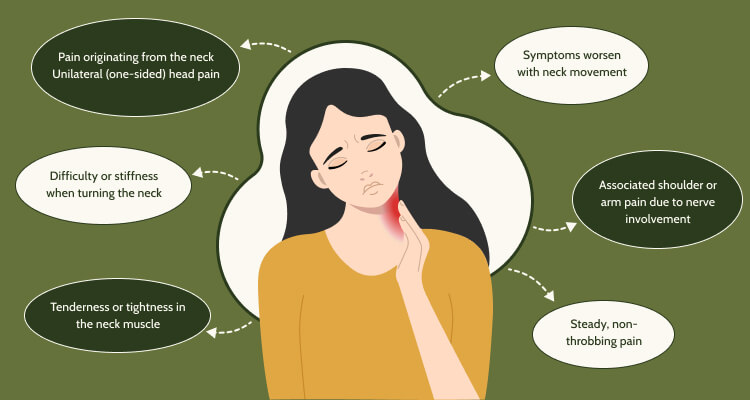
The Bottom Line
Headaches—whether migraines, tension headaches, or sinus headaches—can significantly impact your quality of life. However, the first step towards a cure is to understand the causes of different headaches. Conventional treatments provide relief, but a holistic approach like Ayurveda offers lasting solutions that address the root causes while promoting overall well-being.
At Live Your Best Life, our mission is to make integrative health accessible, empowering mainstream Americans to embrace holistic wellness without the complexities of conventional medicine. By blending ancient Ayurvedic wisdom with evidence-based practices, we provide personalized, affordable solutions tailored to your unique needs.
From addressing chronic conditions to enhancing mental health and overall vitality, our platform connects you with international experts in Ayurveda and yoga, offering treatments and strategies that are both effective and transformative. Imagine a life where you’re not just managing headaches but thriving in every aspect—physically, mentally, and emotionally.
Join us at Live Your Best Life, where we combine affordability, accessibility, and expertise to help you achieve true wellness. Together, let’s create a path to vibrant health, free from the burdens of chronic pain and filled with the potential for your best days ahead.





